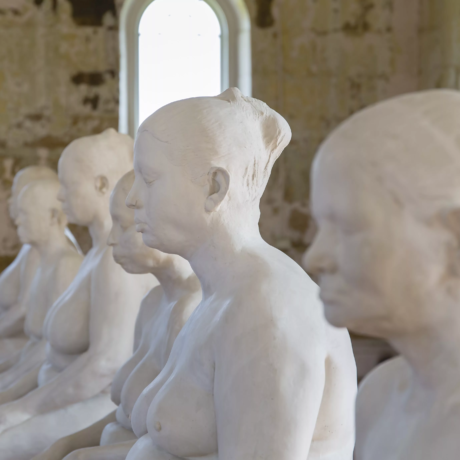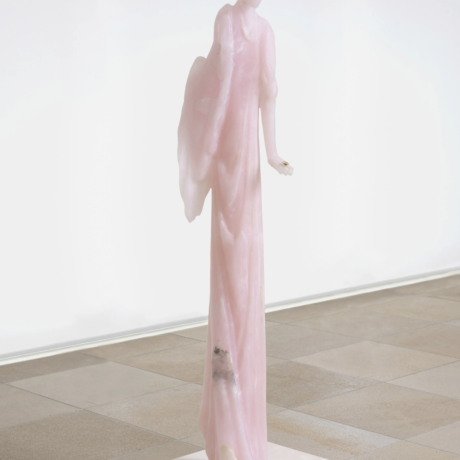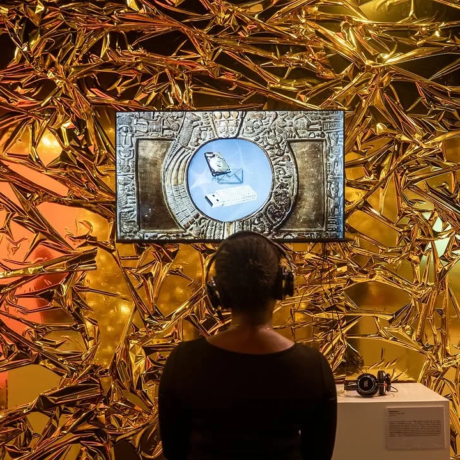Elephant writer Eliza Goodpasture explores Bharti Kher’s exhibition at the Yorkshire Sculpture Park and reflects on the themes of embodiment present in the show.

“When I make art, I make it with my whole body,” Bharti Kher said as she entered her new exhibition at the Yorkshire Sculpture Park. Titled “Alchemies,” the retrospective features a wildly diverse range of sculptures and multimedia works. It’s hard to connect them all visually, but the theme of embodiment ties the installation together. The title reflects Kher’s ethos of animism, or her belief in a universal life force or energy that permeates everything, living or dead. “Alchemies,” for Kher, refers to “the human body’s potential to be magical.”
Most of Kher’s works are representations of bodies. In the central room in the exhibition, over a dozen cast or sculpted female bodies are brought together on a multi-level plinth that references the structure of a Hindu temple. The sculptures are bizarre: many are headless, or putting things in various orifices, or completely covered in piles of fabric. There is a campiness to the eclectic, strange array of forms with their unpredictable materiality. Kher calls one who is pulling fabric through her mouth and out her ass a “happening,” referring to the second-wave feminist performance art. It brings to mind Carolee Scheemann’s famous work Interior Scroll, in which she pulled a scroll from inside her vagina and read from it. Another of Kher’s sculptures is made of paper mache, which is made from pulped art magazines. One of the piles of cloth is meant to represent Benazir Bhutto, the former prime minister of Pakistan who was assassinated in 2007. The room is chaotic, but obviously great fun for Kher, and there is certainly a sense of potency or “activation,” as she puts it, from this crowd of goddesses.
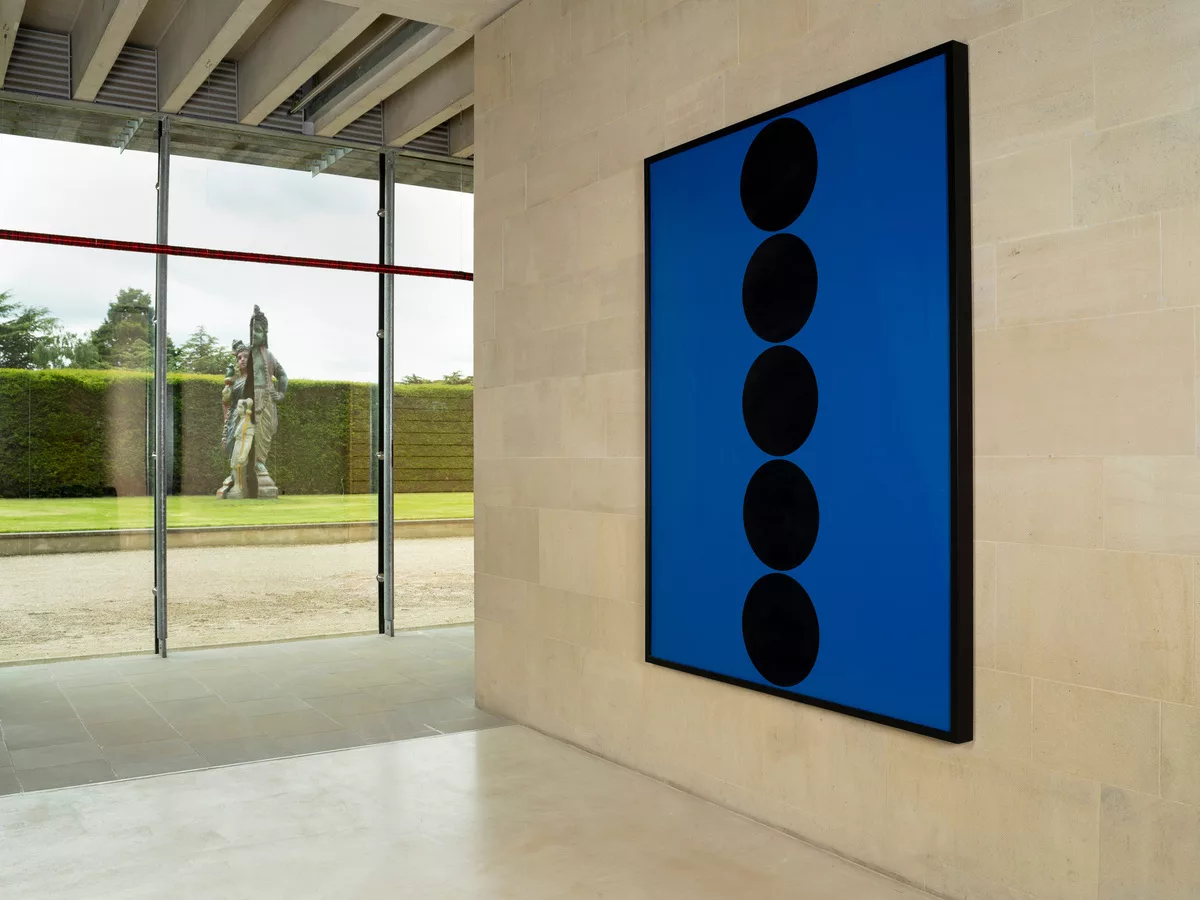
Kher was born in 1969 in London and grew up in the suburbs of the capital. She moved to New Delhi in her twenties in search of a deeper understanding of her heritage. The kitsch and messiness of Kher’s work reflect the disjunction in identity she experienced as a second-generation Indian immigrant in England, and the strangeness of returning to claim a homeland she was not born in. The centrality of Indian cultural motifs, like the bindi and the bangle, as well as the potent cocktail of Indian religious traditions that permeate Kher’s work, are rather on the nose.
Running down the length of the gallery space at the Yorkshire Sculpture Park is the largest ever iteration of Kher’s Bloodline installation, which is a long line of red bangles representing an artery, meant to bring the building to life. It’s easy to miss, but epitomises Kher’s interest in the material construction of bodies and life force.
The non-figurative works in the gallery are equally conceptual but visually quite different to Kher’s many cavorting women. The hot winds that blow from the west is a cube made from old iron radiators. Kher found them in America and brought them to India, where she made the “folly sculpture” as a testament to Western hubris. The decaying radiators were brought east, in a symbolic action against the tides of power. Her large sculpture The deaf room is a constructed room made out of red bangles that have been melted down into bricks. It is meant to reflect on the religious riots in Gujarat in 2002, in which about one thousand people died. Kher also makes multimedia works with bindis, some of them mounted on shattered mirrors. The symbolism of the “third eye” on an unreliable reflective surface speaks to Kher’s interest in self-perception. But all these works seem to be clutching at very literal meanings, which gives them that pervading sense of clutter and camp.
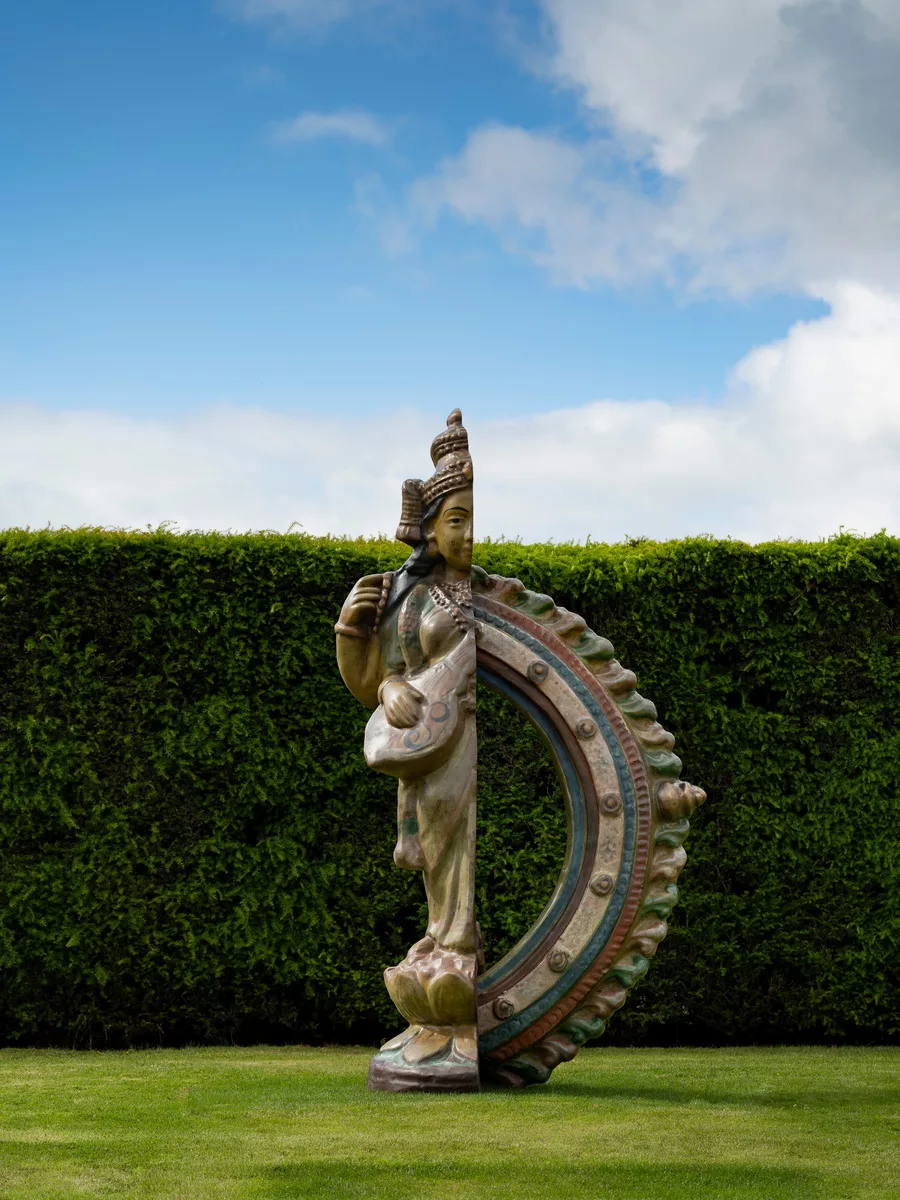
By far the most substantive and moving work in this exhibition is Six Women, made between 2012 and 2014. The work features plaster casts of six women sitting on stools, lined up against a blank wall. The casts were taken from the bodies of six sex workers Kher met in Kolkata. All the women are over forty and all of them are mothers. As she talked about this work, Kher explained the process of taking a plaster cast, in which the plaster is laid directly on the skin. It heats up as it dries, causing the skin’s pores to open up. Kher feels that the energy of the body, and all the bodies it has ever known, are thus transferred to the plaster and to the final work of art. She chose to work with sex workers because they had been in contact with so many other bodies, and thus would imbue the plaster with the most complex energy.
Kher remarked that these works helped the women whose bodies they represent recognise that their bodies were just that: bodies. For Kher, the body is an object like any other, not the source of selfhood. “The body is just a container,” Kher said. “Consciousness is everywhere, in and out of bodies. The nature of nature is that everything is all one.” Kher’s practice echoes the Ancient Egyptians, who believed that a plaster death mask captured the soul of the person who had passed. The idea that material can be an agent of memory is made literal here, with the plaster carrying existing memories and creating new ones.
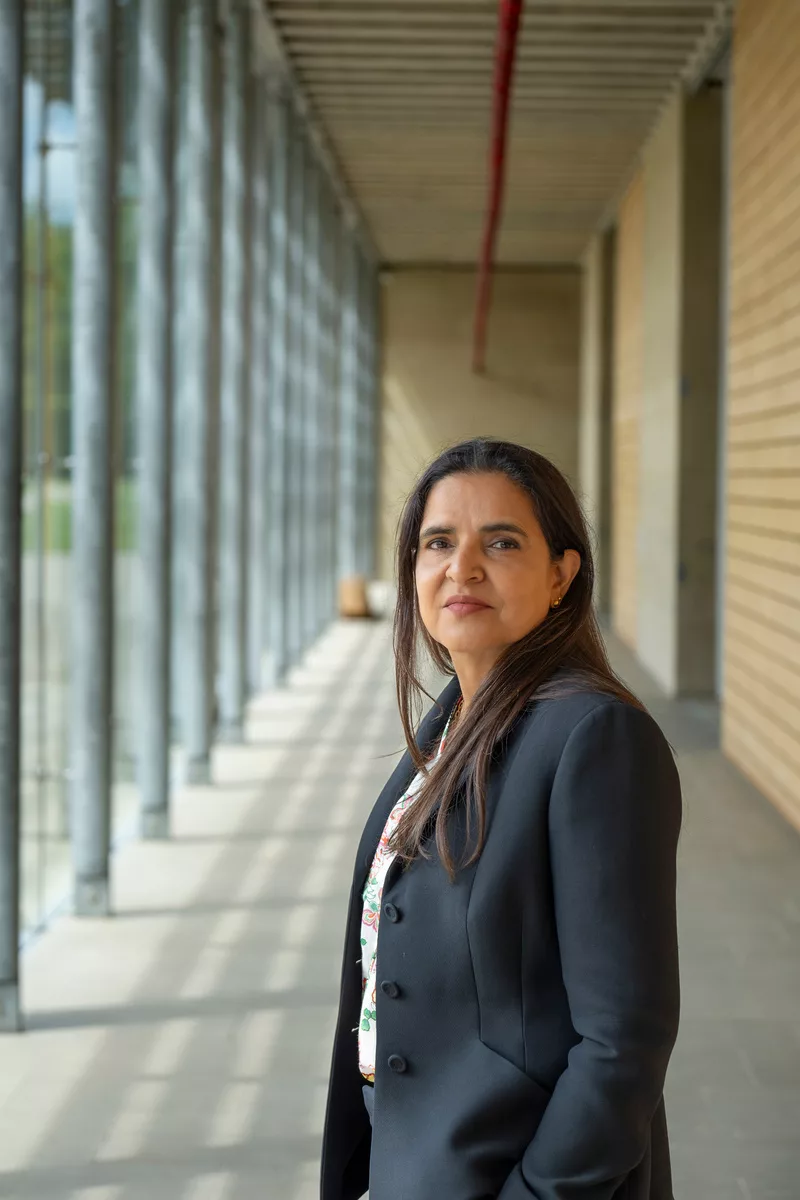
Kher’s attitude stands in interesting contrast to the prevailing trends in the art world today around embodiment, particularly regarding women’s bodies. Rather than making art that claims the body as central to identity and experience, Kher situates bodies as merely things we carry during this life. It’s refreshingly light, and a powerful provocation. How vast are the possibilities for life and for art making if the body is merely a tool for making or a vessel for consciousness.
Had I not been walking through this exhibition with Kher, I would have been completely lost in its apparent randomness. In one room there is that pile of old radiators, in another there are photoshopped images of women turning into animals, in another there are spirals made of bindis, and in another there are those eerie casts of six women. Kher’s sensibilities of energy and oneness give some sense to the confusion: for her, it is clear that everything is connected and that these works are all explorations of that connection. Her passion for the works, and the stories she tells about them, are rich and engaging. But for most viewers seeing this hodgepodge without her guidance, it will be challenging to parse beyond the kitsch.
Written by Eliza Goodpasture
Alchemies by Bharti Kher is on view at the Yorkshire Sculpture Park until 27 April 2025.
find out more